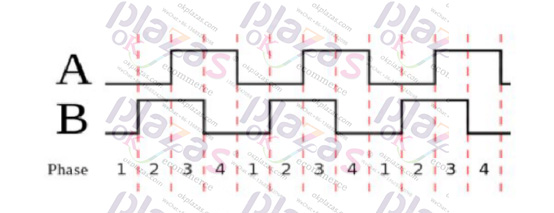Encoder software quadruple frequency technology
Encoder software quadruple frequency technology
Let's talk about the principle of encoder frequency multiplication.
In order to increase your interest in learning below, we first make it clear that this is a practical technology that can truly increase the accuracy of the encoder by 4 times. The effect can be analogous to the optical zoom of a SLR camera, rather than a digital zoom that sacrifices sharpness to enlarge the image. OK, let's take a look at the waveform diagram output by the encoder below.

Here, we are realizing quadruple frequency through software. First of all, you can see the AB phase waveform output by the encoder in the above figure. Normally, when we use the M method to measure speed, we will obtain the speed information by measuring the number of pulses output by the A phase per unit time. In the conventional method, we only measure the rising or falling edge of Phase A (or Phase B), which is one of the corresponding numbers 1234 in the above figure, so that we can only count 3 times. The quadrupling method is to measure the rising and falling edges of the A-phase and B-phase encoders. In this way, 12 times (3 cycles of 1234) can be counted in the same time. This is the principle of software quadrupling.





